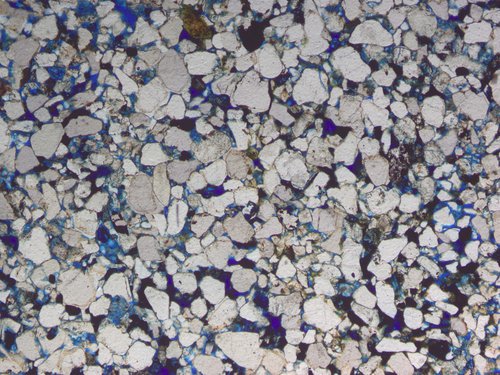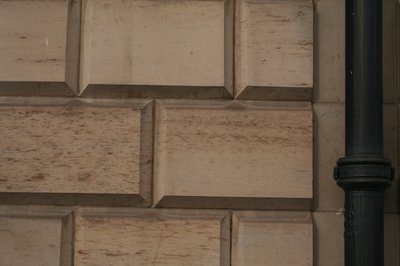Historically, stone has been the predominant construction material in Scotland and in much of the UK. For a long time stone replacements were carried out based purely on identifying a visual match, however we now know that matching the physical properties of a stone is highly important for an appropriate and long-lasting repair. The way that water moves through and over stone is largely dictated by its connected porosity or permeability. If a replacement stone is far less permeable than the surrounding stones it is likely to cause deterioration of the surrounding original masonry. If it is more permeable it is likely to suffer higher levels of deterioration than the surrounding stone within a short time scale.
The Scottish Lime Centre Trust is now able to provide full petrographic with physical testing analysis in-house, producing comprehensive stone matching reports.
Sampling
You have three options:
- Collect a representative sample yourself and send it in to us at Charlestown Workshops;
- We will come to your site to identify an appropriate location from which to sample the stone using a Hilti core drill which produces a clean sample and minimal disruption to the stonework;
- As above but included as part of one of our Building Advisory Services.
Full petrographic analysis with physical testing and stone matching can take up to 6 weeks. This can vary depending on the time taken for thin-section preparation. Please allow enough time for analysis prior to ordering stone or carrying out new works as thin section preparation requires out-of-house lab assistance and cannot be expedited.
Work will only commence once the Sample Information Sheet and Client Detail Form have been received fully completed, with an adequate size sample.
Your sample must:
- be in a good condition to ensure the match will be to a fresh part of the stone;
- measure a minimum of c.40mm x 40mm x 20mm (or have a surface area no smaller than the size of a yellow post-it note);
- be well packaged to ensure it arrives undamaged.
Stone Information Sheet (98.5 KB) - This should be completed and sent to us either with your sample or scanned and sent to us by email prior to sending the sample (1 info sheet per sample)
This form needs to be completed and returned before we can start any chargeable work. Ensure that you check and sign, work will be delayed until we receive a signed form.
The Analysis Procedure

- Visual observations will be made of your sample in hand specimen;
- A sub-sample of the stone will be turned into the thin section for microscopic examination. This involves the vacuum impregnation of blue-stained epoxy resin (which allows the visualisation of the stone porosity) into the stone before it is mounted onto a glass slide, cut, ground and polished to a thickness of roughly 30 microns. This is then visualised under a polarised light microscope fitted with a camera.
- A separate sub-sample will be tested for its physical properties including water absorption, density and porosity;
- Following the analysis and testing as detailed above we will identify one or more potential stone matches available from currently active quarries based on our knowledge of the material available at this time.
